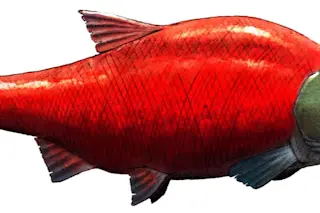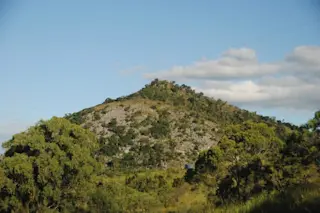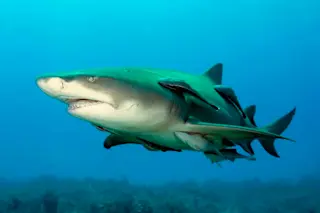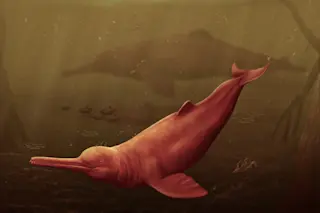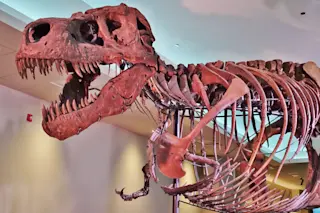A spiky-toothed giant salmon once plied the ancient rivers and coast of California. Credit: Jacob Biewer/Society for Vertebrate Paleontology. Giant salmon up to nine feet long left their homes in the Pacific to spawn in California's ancient rivers more than 5 million years ago. But if you think the big deal about these Miocene monsters was their size then guess again: it's a fish story you can really sink your teeth into. According to research presented at this week's annual meeting of the Society for Vertebrate Paleontology in Salt Lake City, giant salmon lived along the Californian coast 5 to 11 million years ago, heading up ancient rivers to spawn, much like today's Pacific salmon. But the average modern wild Pacific salmon weighs 4-20 pounds at maturity, according at least to the people who catch them for a living. The giant monster salmon of the Late Miocene checked in at ...
That's a Lotta Lox: 9-Foot Salmon Once Plied Pacific Waters
Discover the giant salmon California once held, weighing up to 400 lbs and spawning in ancient rivers. A fascinating fish story awaits!
More on Discover
Stay Curious
SubscribeTo The Magazine
Save up to 40% off the cover price when you subscribe to Discover magazine.
Subscribe

